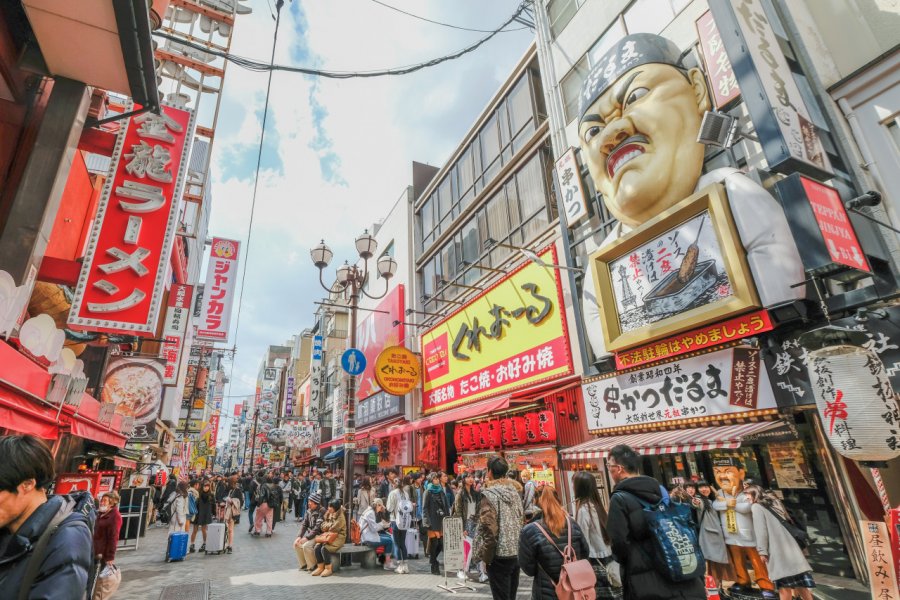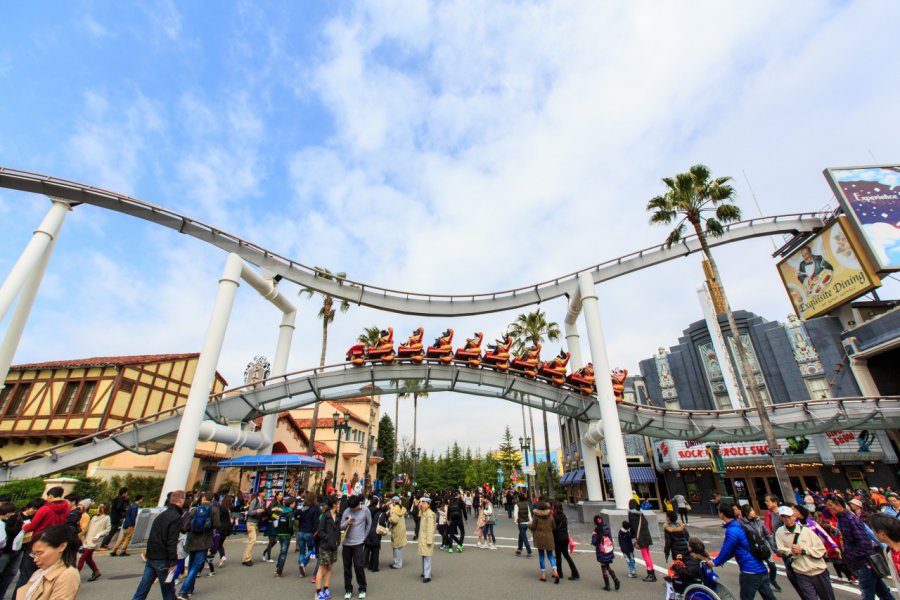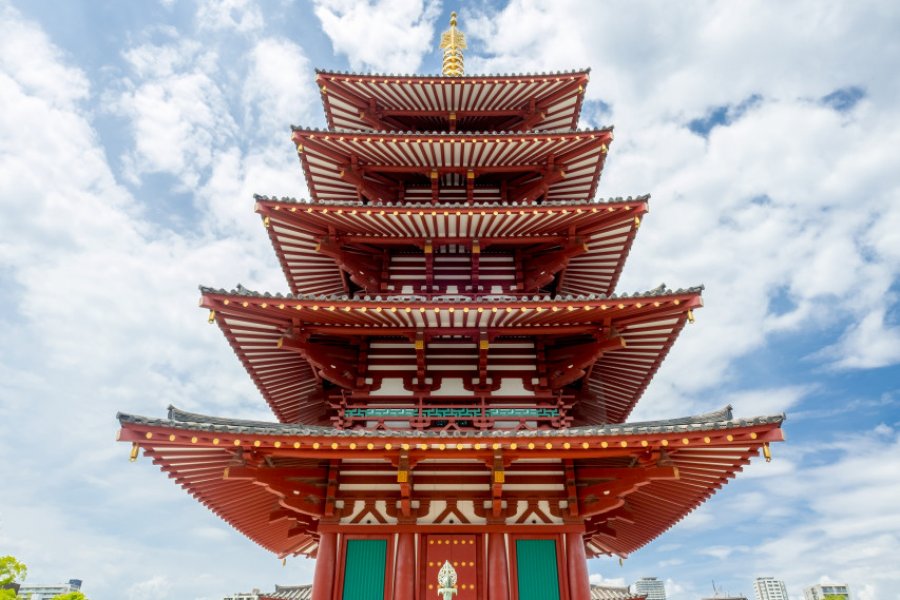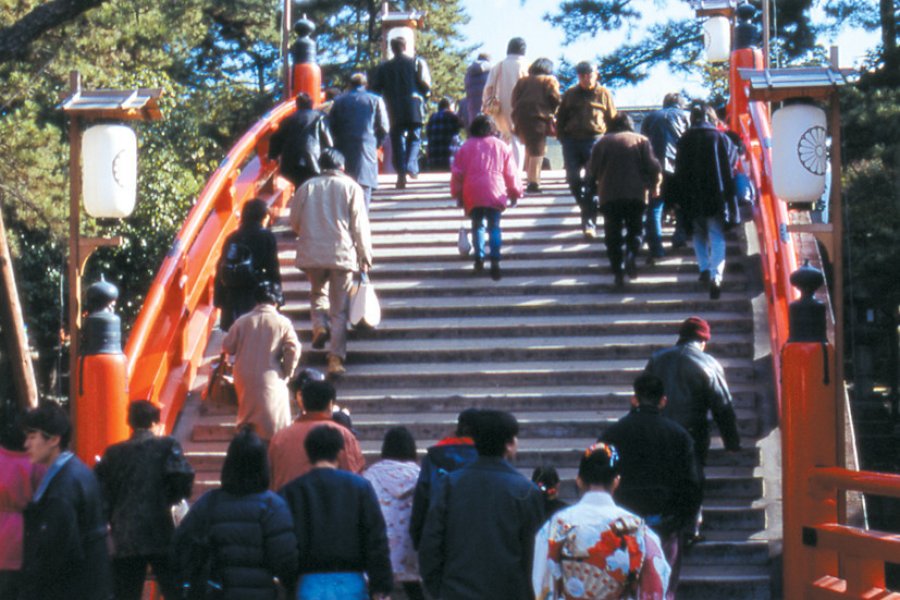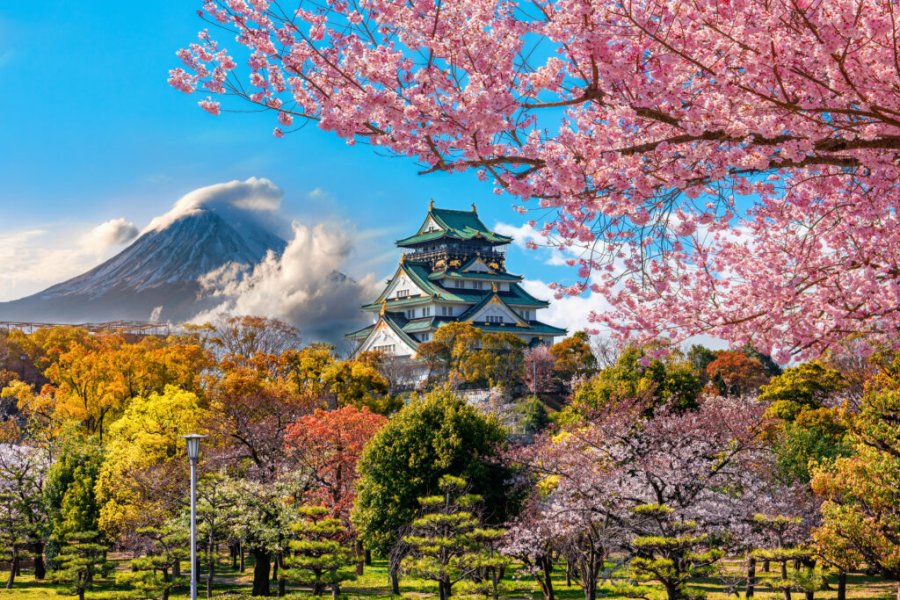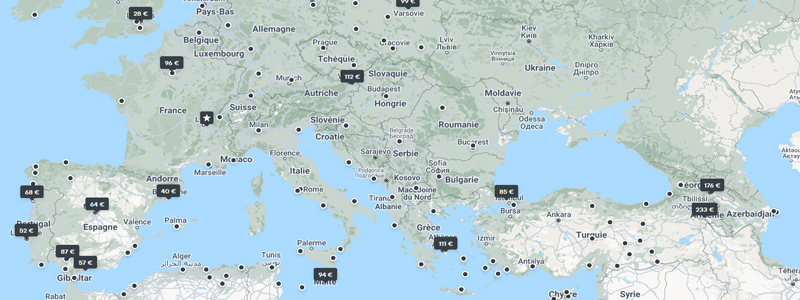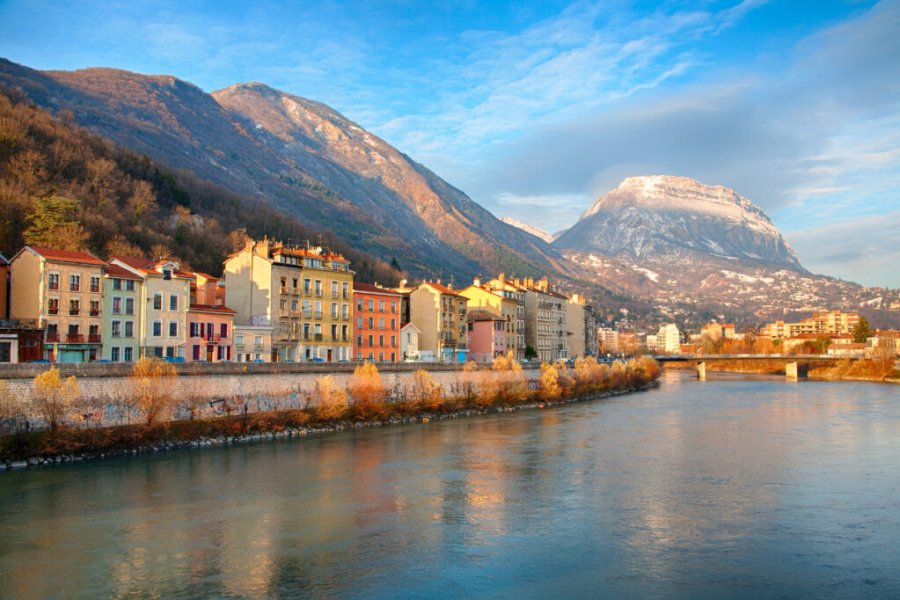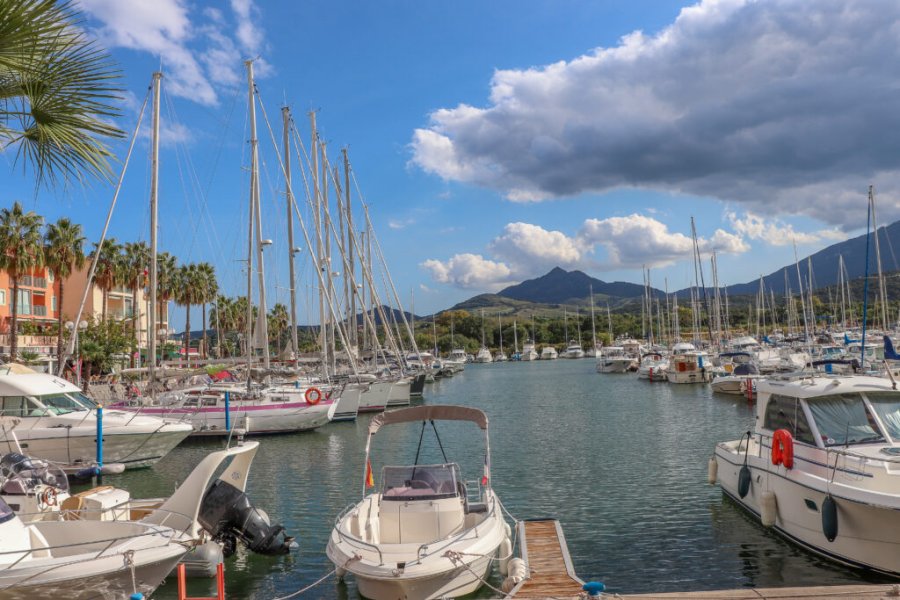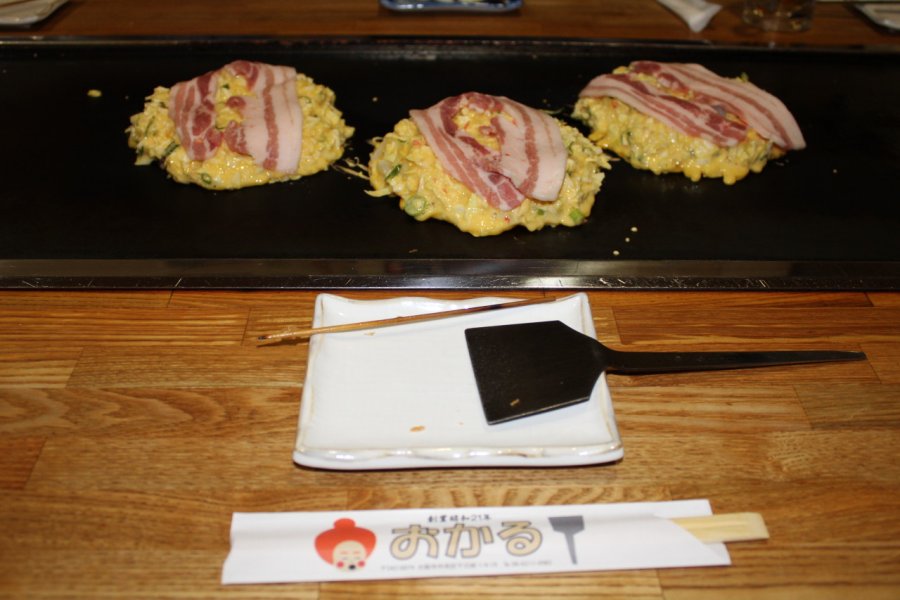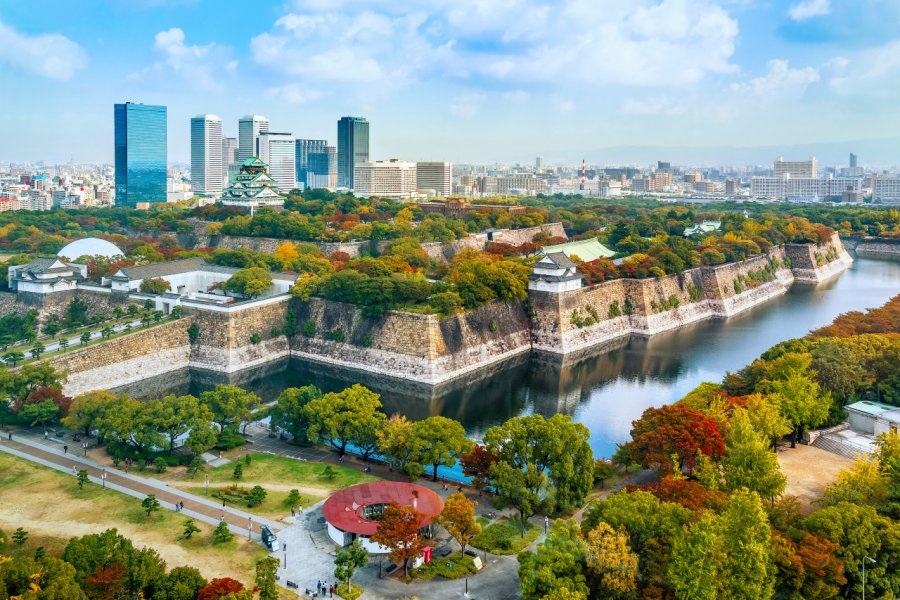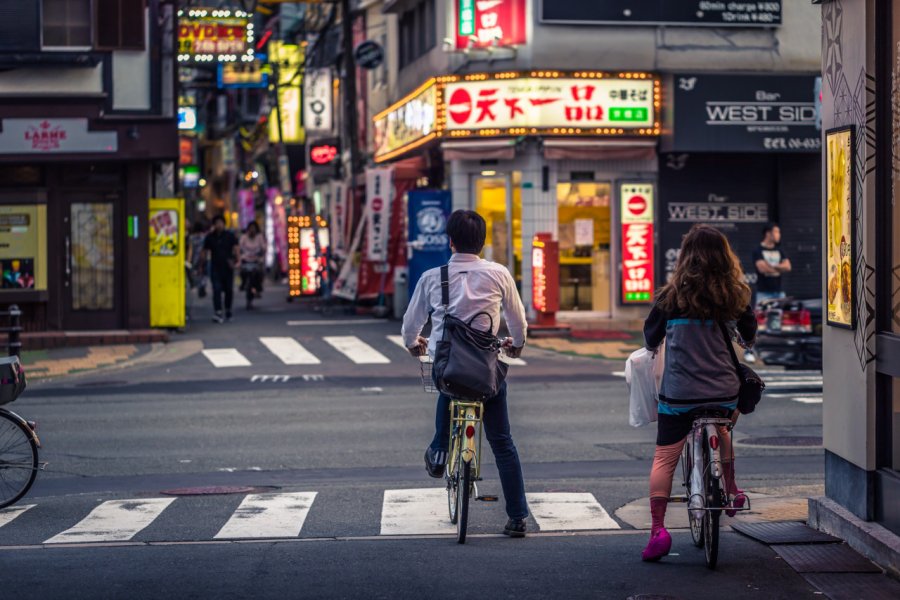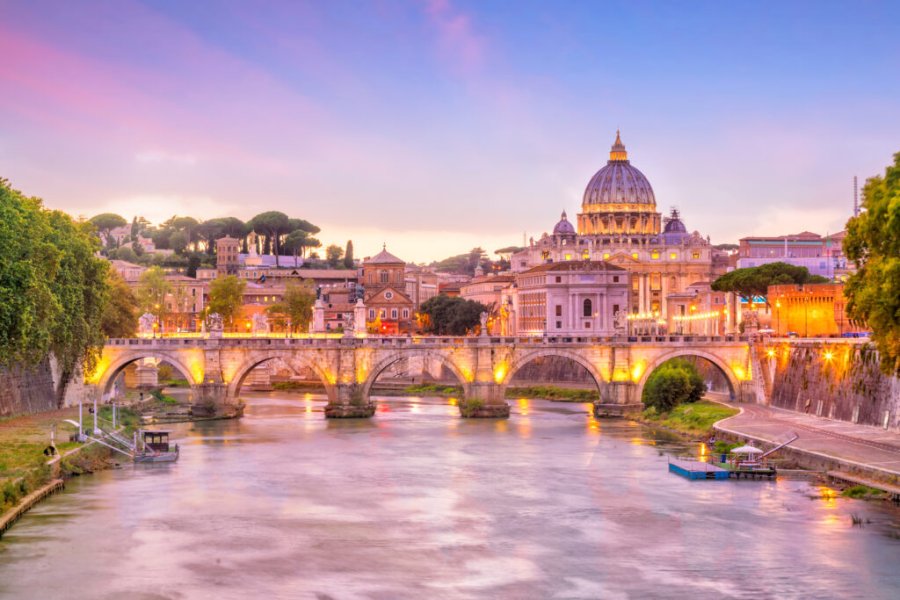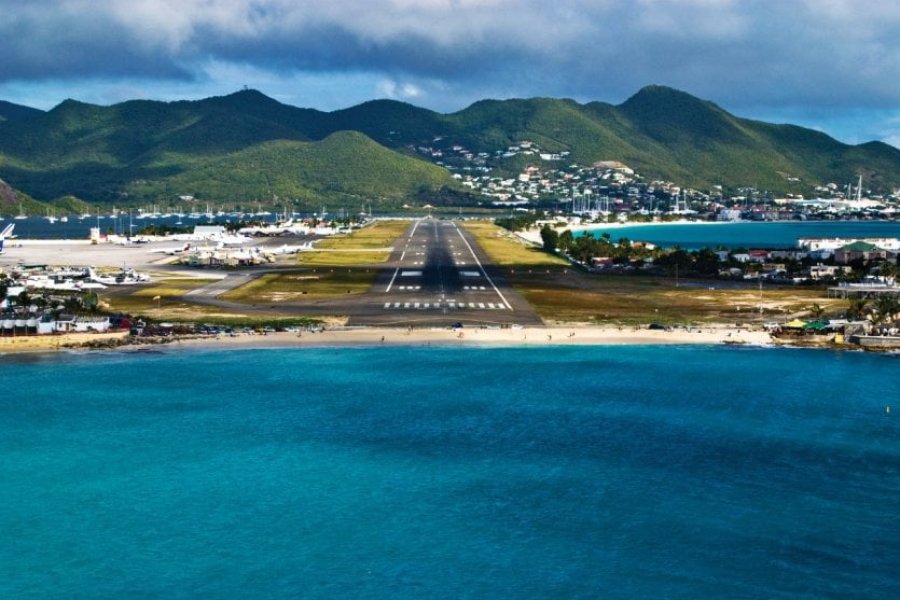Travel Guide Ōsaka
In the south of the main island of the Japanese archipelago, it is the third largest city in Japan, known for its street food and lively nightlife. Ōsaka is the modern Japan , the one of business, but also of epicureanism. A dynamic merchant port and Japanese city with bold buildings, Ōsaka occupies a beautiful bay. Bathed in canals, it is both a modern city and a city that values its historical monuments and keeps its traditions alive, proud to have seen the birth of the Bunraku puppet theater, it is home toUniversal Studios JapanTM, a theme park replicating Hollywood fever. If you were to visit only one monument, it would be Ōsaka Castle, once the most important castle in Japan, built in 1586. You visit the exact copy of the original building, which houses a magnificent collection of documents and artifacts related to the local nobility and the history of Ōsaka on 5 floors. Also worth seeing are the Sumiyoshi Taisha Shinto shrine and the Shi Tennō-ji Buddhist temple dating from 593. Between two branches of the Yodo River, Nakanoshima is the administrative center of the city. The Temmangu Shrine is located here, near the main shopping street Tenjinbashi. The most visited shopping and entertainment areas are Umeda and Namba. It is also necessary to walk in the Tennōji park, the green lung of the city center where you will appreciate the Keitakuen garden. Finally, a visit to the Kaiyukan aquarium, the largest in the world, is a must. A destination to discover with your tourist guide in hand.
What to visit Ōsaka?
Suggested addresses Ōsaka
When to go to Ōsaka?
When to go to Japan? Spring and autumn are the high tourist seasons in Japan, so it is during this period that hotel rates are the highest and since accommodation is the most important budget expense in Japan, it can be interesting to go out of season to save money. In order to avoid the most crowded periods and to pay less, the best time to travel to Japan is at the end of November-beginning of December, at the end of February-beginning of March, or at the end of May and June, i.e. during the low tourist season. If you go to Japan in spring, you will be able to attend the Hanami, the festival of the sakura cherry trees in bloom. A national event. May 5 is the children's festival. In autumn, we celebrate the blaze of maple trees and ginkgo bilobas. It is Momiji. In any season, you can find an old apartment for rent at a reduced cost. Western tourists will appreciate its retro charm. Avoid winter, however, because in old housing, the heating is sketchy. At the end of July is held in Ōsaka one of the largest festivals in Japan: Tenjin matsuri. And it is a parade of boats on the great river of Ōsaka, carrying miniature temples and shrines and large spectacular fires. On the occasion the city is decorated with a multitude of torches and lanterns. It is a very popular, festive and family event.
Weather at the moment
With 7,000 islands and islets, spread over 3,800 km, Japan has multiple climates, not to mention the significant variations in the mountains. Boreal in the north of Japan and tropical in the south, the climate in central Japan is more temperate. Spring and autumn enjoy pleasant temperatures and constitute the high tourist season. The rest of the year is generally the low tourist season in Japan, especially in Ōsaka where it is very hot in summer, quite cold in winter.
Most of the budget is spent on accommodation, which is rarely cheap. On the other hand, you can eat for a very good price. Public transport is more expensive than in France, especially the high speed train. We pay more often in cash than by credit card, not always accepted. The currency is the yen, the exchange is easy. To withdraw yen, go to the ATM of the 7/12 supermarkets. No tip in Japan, perceived as an insult!
No visa is required for a stay of 90 days or less. All you need is a passport valid for the duration of your stay, a round-trip air ticket and enough money to support yourself while in the country. Checks are possible. Politeness and citizenship rules are inherent to the country. Always be charitable and do not outlaw yourself. You can travel with a regional Japan Rail Pass with the high-speed train to Kyōto, for example. You can buy it there now, but it will cost you less if you buy it in advance, in your country.
In summer, pollution and heat are to be taken into account for the fragile persons. There is no malaria in Japan, and no vaccine is required to enter the country. Vaccinations against tetanus, diphtheria, poliomyelitis and hepatitis A are recommended in Japan. The country has a remarkable hospital structure. It is advisable to have a mutual insurance company that reimburses your medical expenses. They are high in Japan. Embassies also have their own attached doctors. Wearing a protective mask is common. It is advisable to wear it if you are sick, to avoid being contaminated by others or in case of pollution peak.
Practical information
- When to travel?
- Weather forecast
- Budget
- Formalities
- Health
- How to travel by yourself?
- How to get organized?
- Getting around
Media
How to go to Ōsaka? Our advice & tips
To Japan, the offer is very wide. You will be offered the combined discovery of Kyōto and Ōsaka, for example. Contrary to popular belief, small budgets can find a package for a stay in Ōsaka, in freedom, at a decent price, with accommodation in a small room. Big budgets have the choice of stays in luxury ryokans.
Discover our selection of travel agencies for this destinationŌsaka is 3 hours from Tōkyō by Shinkansen, the high-speed train, and 1 hour by air. In addition, its international airport hosts daily direct flights from Europe. Traveling alone in Japan is not a problem, as Japan is a very safe country and the Japanese are always ready to help you. The only problem is the language. Japanese people rarely master English. Bring a lexicon or Google translation. Book a few nights in a hostel before leaving. On the spot you will make contacts and find accommodation at good prices.
In Ōsaka you have a choice of transportation: cab, subway or train. For the cab, write down the address of your destination in Japanese on a piece of paper in advance, as not all drivers know English. Public transportation is efficient. If you travel a lot, it is better to buy passes. The city is served by 9 subway lines, 6 major train lines and 10 regional lines that connect the city to its suburbs.
Find unique Stay Offers with our Partners
Pictures and images Ōsaka
Discover Ōsaka
When to go to Japan? Spring and autumn are the high tourist seasons in Japan, so it is during this period that hotel...
Read more about it
With 7,000 islands and islets, spread over 3,800 km, Japan has multiple climates, not to mention the significant vari...
Read more about it
Most of the budget is spent on accommodation, which is rarely cheap. On the other hand, you can eat for a very good p...
Read more about it
No visa is required for a stay of 90 days or less. All you need is a passport valid for the duration of your stay, a...
Read more about it
In summer, pollution and heat are to be taken into account for the fragile persons. There is no malaria in Japan, and...
Read more about it
Ōsaka is 3 hours from Tōkyō by Shinkansen, the high-speed train, and 1 hour by air. In addition, its international...
Read more about it
To Japan, the offer is very wide. You will be offered the combined discovery of Kyōto and Ōsaka, for example. Contr...
Read more about it
In Ōsaka you have a choice of transportation: cab, subway or train. For the cab, write down the address of your dest...
Read more about it
